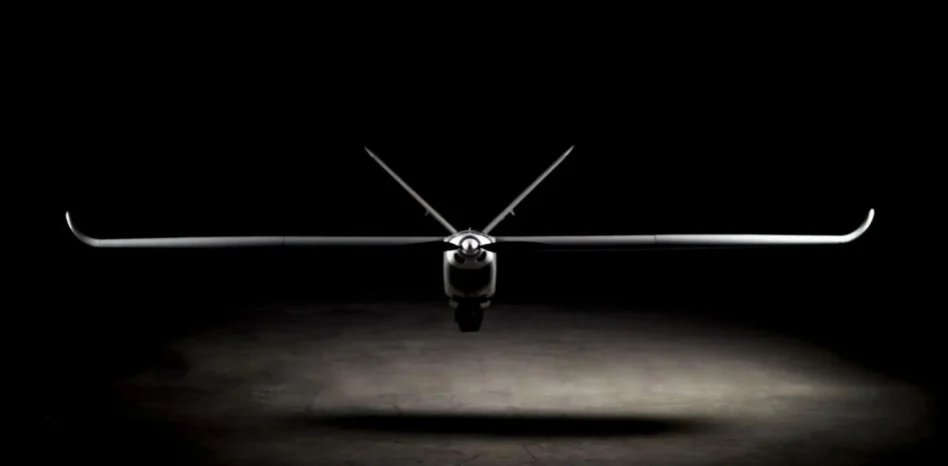Remember when we said the Ukrainians were coming? Well, it’s beginning to look like we were right. This morning, Ukraine-focused US VC UA1 announced in an exclusive release to Tectonic that they’re raising a $50M fund to scale Ukrainian tech “into capabilities that strengthen U.S., European, and NATO security.”
The firm—co-founded by US Marine Corps veterans William McNulty and Lenore Karafa—has already raised $18M, and has invested in companies including HIMERA, Swarmer, Frontline Robotics, and Bravo Ordinance. Not a bad starting lineup.
“Ukraine’s battlefield has pressure-tested low-cost, rapidly iterated systems—especially in drones, EW resilience, and autonomy—that allies can integrate now to close capability gaps and deterrence shortfalls,” Karafa told Tectonic via email. “For the United States, [this] means faster modernization cycles, quicker delivery of proven tools to warfighters, and preserving a decisive technological edge over peer competitors.”
On the frontline: UA1 has a pretty unique origin story. The fund was born out of White Stork, an NGO that McNulty founded back in the early days after the Russian invasion of Ukraine in 2022. The idea was to get “life-saving medical kits, anti-drone systems, and critical humanitarian aid” to the frontline as quickly as possible, according to the charity’s website.
“I was a year into building White Stork when Alexander Kamyshin [Special Advisor for Strategic Affairs to Ukraine’s president and former Minister of Strategic Industries] suggested that the best thing we could do for Ukraine was invest in their growing defence tech sector,” McNulty told Tectonic.
From there, he reached out to Lenore, who’d gone to Wall Street after leaving the Marines. They raised the $18M mostly from White Stork’s donor network, and plan to raise the rest from family offices and institutional investors who understand “the enormous opportunity to invest in Ukrainian defense innovation” and “the moral imperative of stopping Russia in Ukraine,” McNulty said.
So far, they’ve invested in:
- Airlogix — A jam-proof drone producer.
- HIMERA — Battlefield comms
- Buntar Aerospace — Tactical UAVs
- Swarmer — AI-driven swarming
- Frontline Robotics — Robotics for de-mining and logistics, teamed up with ARX
- Bravo Ordinance — Advanced munitions
- Guardian RF — Counter-UAS detection
While McNulty wouldn’t specify how much they’ve invested in each company, he said that “typical initial check size will be $300k to $750K with follow-on checks significantly larger.”
Build-up: And they plan to keep going. Not only is UA1 investing in these companies, according to Karafa, but they are helping them get international market-ready.
“We pair capital with ‘go-to-program’ support: advice and connections for compliance readiness, U.S./EU entity structuring, supply-chain de-risking, and curated intros to primes, program execs, and follow-on capital,” she said. “That bridge—from Ukrainian proof to allied procurement—is at the core of our thesis.”
And, so far, it does seem to be working in at least one case: earlier this month, HIMERA delivered its ruggedized radios to a European NATO member country, though the company (and the customer) wouldn’t specify who, or how big the contract was.
Lock it down: If you’ve been paying attention, there is one massive elephant lurking in the UA1 room: Ukraine’s weapons export ban. The country has had a de facto embargo on all weapons and defense tech sales out of the country since the full-scale invasion in 2022, which means that all the fun, lethal stuff that’s been proven on the frontline has to stay in the country.
However, Zelenskyy’s government has hinted that that could change—and soon.
Last fall, Zelenskyy asked the Defense Ministry to draft proposals to allow the export of weaponry—but only members of the Ramstein group.
Then, in August, Ukrainian Defense Minister Denys Shmyhal said that there is “no legislative ban [on exports]; exports are possible.” And, in October, the Brave1 defense cluster identified four areas—naval drones, drone navigation software technologies, turrets, and unmanned ground vehicles—as export-ready weapons classes.
For what it’s worth, the Financial Times reported late last year that exporting drones alone could generate up to $20B in revenue for Ukraine. Major money moves.
Big ups: This would be a boon for UA1’s companies, as well. “A controlled-exports regime would let portfolio companies convert combat-proven demand into NATO/EU contracts faster, with joint ventures and licensed production hubs in allied countries,” McNulty said. “It is at that point that these companies will attract valuations more in-line with other European and US start-ups.”
Huge (and we mean huge) if true.

